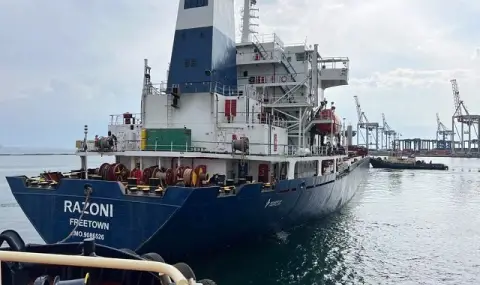After three days of intense negotiations, the Trump administration, Ukraine and Russia agreed to a partial ceasefire, the main details of which, including what it includes and when it takes effect, have been the subject of dispute between the warring parties, suggesting that the road to a full truce will be long and fraught with disagreements.
The talks focused on easing shipping in the Black Sea and ending long-range shelling of energy infrastructure - relatively easy goals that both sides had experience discussing before the U.S.-brokered indirect talks.
Although there is uncertainty on most issues, the Associated Press press presents the key points of the partial ceasefire agreement, as well as the stakes in the coming weeks in the ongoing negotiations.
Conflicting statements emerged immediately after Tuesday's talks. Both sides have expressed different opinions on when the strikes on energy facilities have stopped and accused each other of violating the agreed ceasefire.
Russia has also set a condition for lifting US sanctions in order to lift restrictions on shipping in the Black Sea, a position that has been rejected by Kiev.
Russian officials have welcomed the outcome of the talks with optimism, and Ukrainian President Volodymyr Zelensky has described them as a good start, although some officials in Kiev have expressed disagreement.
"Something tells me that the enemy benefits more," Ukrainian lawmaker Yaroslav Zheleznyak told the Interfax-Ukraine news agency.
The United States announced on Tuesday that it had reached a preliminary agreement with Ukraine and Russia to stop fighting and ensure safe shipping in the Black Sea after separate talks with both sides.
No details were given by the agreement, including how or when it will be implemented and monitored, but it appears that it marks a new attempt to secure traffic in the Black Sea after the previous agreement (the so-called grain deal - note). ed.) from 2022, brokered by the UN and Turkey, from which Russia withdrew a year later, in July 2023.
Russia said the Black Sea agreement announced on Tuesday could only come into effect if sanctions on the state-owned Agricultural Bank (Rosselkhozbank - ed. ed.) and other financial institutions involved in food and fertilizer trade and their access to the international SWIFT payment system were lifted.
Zelensky said Moscow was lying about the terms of the agreement, even though the United States later announced it would help restore Russia's access to the global market for agricultural products and fertilizers.
While the benefits for Russia are clear, Ukrainian officials raised the question of how the Black Sea deal announced on Tuesday could benefit their country. It is also unclear, for example, whether attacks on Ukrainian ports will stop.
"I personally do not think that our export capacity will increase significantly. Frankly speaking, thanks to Ukrainian naval drones, we have significantly increased our capabilities in the Black Sea," says Ukrainian MP Zheleznyak.
That is why, after Russia withdrew from the previous agreement in 2023, Ukraine took matters into its own hands to ensure the safety of shipping in the Black Sea. Ukraine opened a trade route that takes ships near the coasts of Bulgaria and Romania, guided by the Ukrainian Navy. At the same time, Ukrainian forces have launched a campaign of naval drone attacks to increase pressure on the Russian navy.
"Unfortunately," Zheleznyak said, the new deal "worsens our position in terms of influence in the Black Sea."
The agreed ceasefire included a halt to long-range strikes on energy infrastructure, but sharp differences emerged immediately after its announcement on Tuesday over when the fighting would stop.
Moscow said the ceasefire was from March 18 and accused Kiev of violating the agreement by striking energy facilities inside Russia. This was denied on Wednesday by the Ukrainian army's General Staff.
The Kremlin then published a list of facilities covered by the partial ceasefire agreement. These included oil refineries, oil and gas pipelines, oil storage facilities, as well as pumping stations, electricity generation and transmission facilities, substations, transformers, switchgear, nuclear power plants and hydroelectric power plants in dams.
Translated from English: Ivo Tasev, BTA
